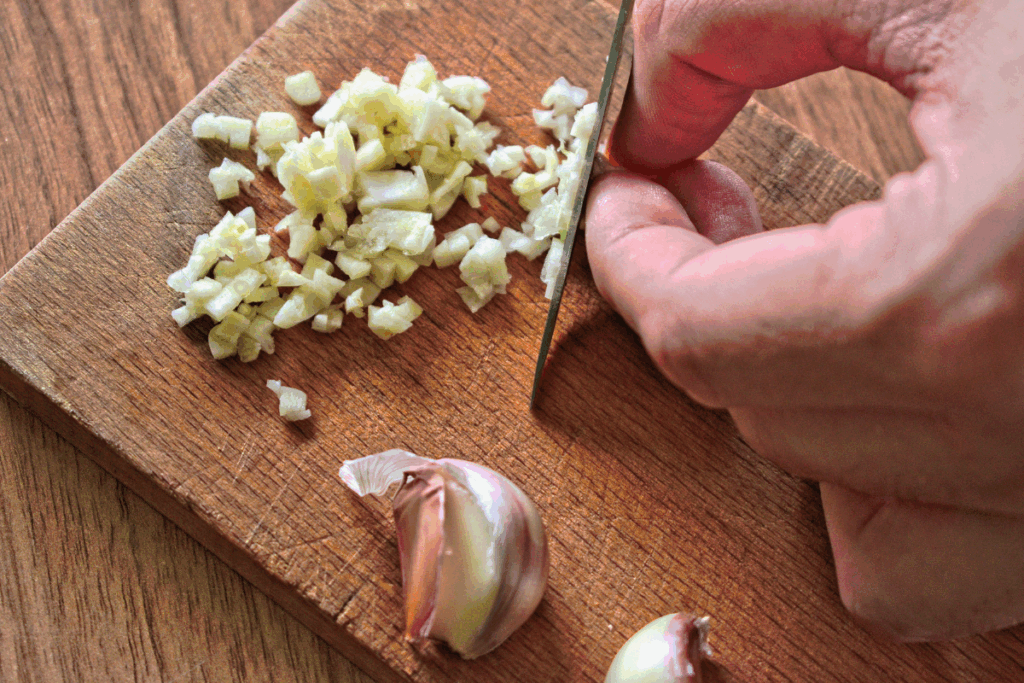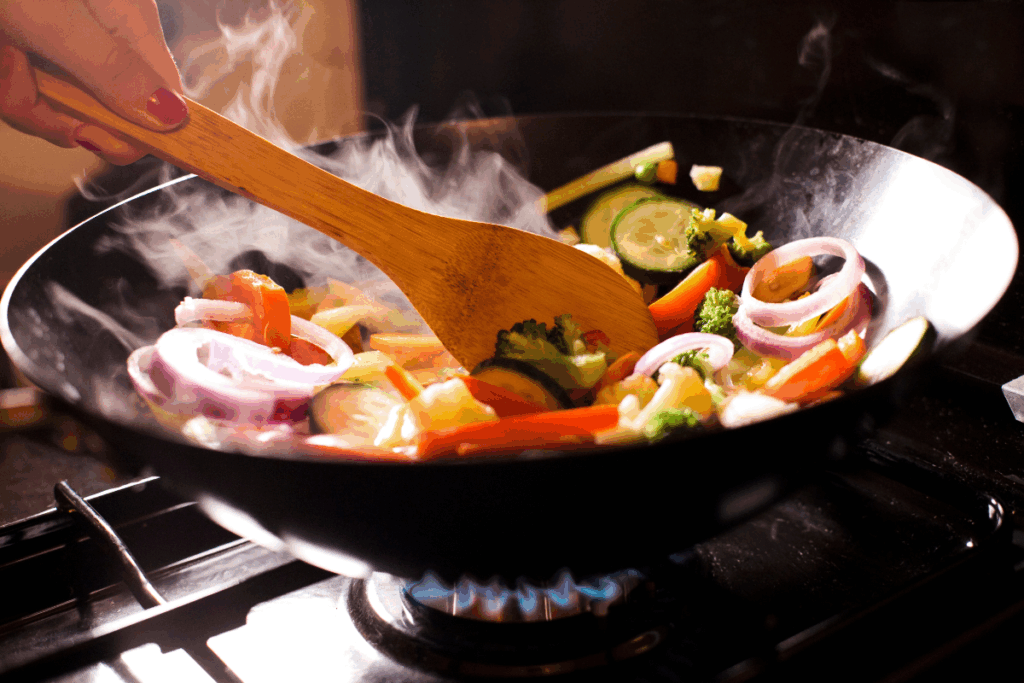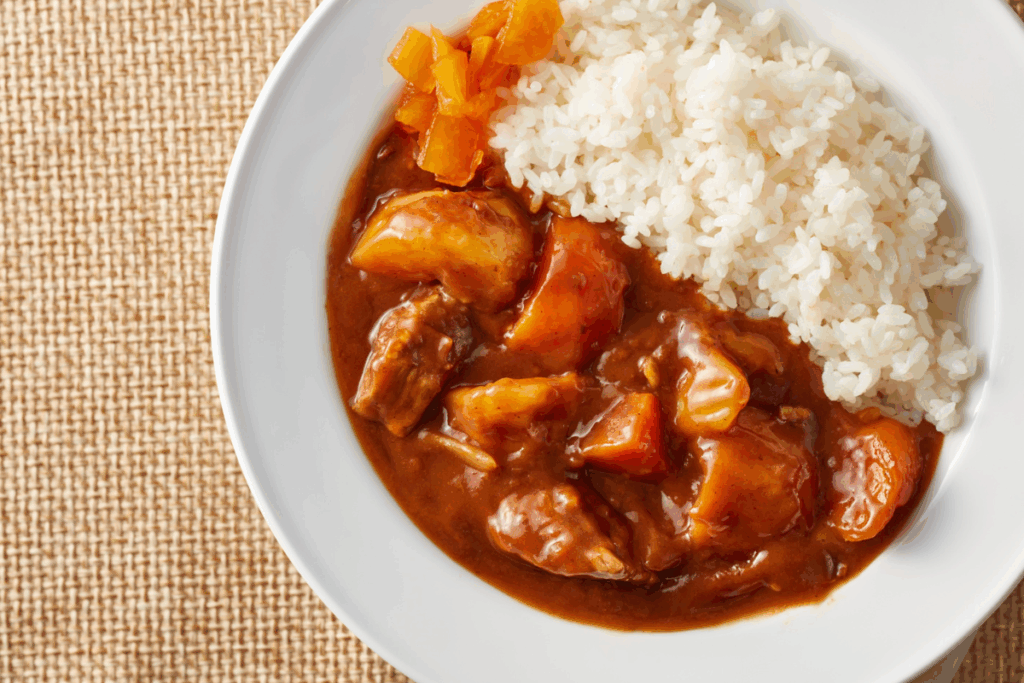When you picture the typical student meal, what comes to mind probably isn’t pretty. Plain noodles with unseasoned chicken, ready meals reduced to clear and toast with something that definitely shouldn’t go on toast.
Many students will leave first year with pesto pasta as the apex of their culinary accomplishments. Now I’m not slamming pesto pasta, it will always have its place as an old reliable struggle meal, but you can do better. So many students cannot cook to save themselves, you might be one of those students, and have no real desire to learn how.
But learn you should! Not only is it cheaper, healthier and tastier, it’s actually quite easy to learn the basics.
To get you started, here are some super simple skills that can help elevate you from struggle meals to something that could actually be considered real food.
1. Basic slicing and dicing

Before you can cook most things, you need to prepare them, which is a deal breaker for many people as it seems boring and time consuming. But the good news is it really doesn’t have to be as with a tiny bit of know-how and a sharp knife, food prep can fly by.
For most of your basic vegetables it will be as simple as cutting off the nasty bits (onion heads and the like) , chopping them into halves or quarters, slicing length wise, slinging breadth wise and then you’re done.
The key thing to remember is that you should make your chopped food relatively similar in size so that it cooks evenly, this is extra important with meat.
2. Seasoning
The thing that seems to scare sports boys the world over, seasoning is where a lot of the flavour that defines your dish comes from. Plus, getting your seasoning right can cover up for a lot of mistakes which makes it invaluable.
The key thing to seasoning is that it’s much easier to under season something than over season it so be generous. Additionally, if you’re cooking meat you should consider rubbing it in oil and seasonings before you cook it this will cause the meat to absorb much more flavour.
3. Marinading
A simple technique that can turn a boring protein with rice into a flavour sensation, a decent marinade can carry many a cheap meal. Simply throw your diced protein into the marinate, make sure everything is coated, cover it and then just leave it to sit.
The longer something is left in the marinade the better, a quick 10-minutes will work but putting something into a marinade in the morning then cooking it at night will be so much better.
Pretty much any flavours you want can work in a marinade but my favorite is honey, chili flakes and soy sauce which makes for an amazing beef stir-fry.
4. Stir-frying

Speaking of, stir-frying is an ultra simple way to get a tasty, healthy meal in no-more than ten minutes. Simply take your wok, pour in some oil, heat it until it starts lightly bubbling and then start adding your ingredients.
Start with whatever takes the longest, like onion, and then just keep adding all your ingredients. The key is to have a high heat and keep everything moving constantly so that your cook is even and nothing sticks to the wok.
5. Sautéing
A variation on pan frying, sautéing involves small or thin cut ingredients cooked in a small amount of oil on a medium-high heat. The important thing to know is that you want all of the food to be touching the pan, resulting in everything cooking very quickly.
Sautéing browns food while maintaining flavour and it does it fast, making the technique a strong go to for many dishes.
6. Searing
One of the most well-known techniques, a good sear will create a browned crust and bring out amazing flavours so it’s a must know for any home cook. To achieve a good sear, get your pan up to a very high heat with a bit of oil then carefully place in whatever you’re cooking and sear until you see a crust you’re happy with.
Be careful with searing thick pieces of meat though as a sear may not cook the centre property so you should either cook it on a lower temperature first or cut your thick piece in half.
7. Simmering
A simmer is how you can really get flavours to dance in any sort of sauce, stew or soup. Simply bring your liquid to a boil after all the ingredients are in, pop the lid on your pot and reduce to a low heat for a while.
During a simmer, the various flavours will mix and mature creating a far better dish, just be careful you don’t reduce the liquid too much.
8. Making decent rice

I’m sick of my flatmate spending way too much money on microwavable rice so I’m throwing in this last tip.
If you’ve boiled rice before, you may have noticed that it ends up incredibly soggy and clumpy. To prevent this, wash your rice a few times and leave it to soak for ten minutes. By doing this you’ll end up with rice that is much less soggy and much more appetising when it’s cooked, simply by doing a little prep.
The best way to do this is actually by having your rice cook while you prep everything else, pro tip.
These are a couple of incredibly basic, fundamental skills that can make the process of learning to cook less daunting.
I hope that you’ll make use of them and then proceed to go further in learning how to cook beautiful meals but even if you don’t, I hope you’ll at least consider adding a little bit of cooked veg to your pesto pasta if for no other reason than making you feel all smug and accomplished.

Topic expertise: Student Cities, Cost of Living, Nightlife, Wellbeing, Accommodation
FAQs on Essential Cooking Skills for Students
Key skills include boiling pasta and rice properly, cooking basic sauces, roasting vegetables, making simple one pan meals, using herbs and spices, safe knife skills, food storage basics, and how to cook meat or plant protein safely.
Batch cooking, planning weekly meals, buying store brand basics, freezing leftovers, and cooking with seasonal vegetables are great ways to stretch a budget. Learning to make sauces and curries at home also saves compared to takeaways.
Start with a good non stick frying pan, a saucepan, chopping board, sharp chef’s knife, baking tray, measuring cups, and basic utensils. These essentials let you cook most simple student meals without overspending on gadgets.
Keep raw meat separate, clean surfaces after use, never leave pans unattended, and label your food in the fridge. Wiping up spills and using oven gloves can help avoid accidents in busy shared kitchens.
Start with pasta and homemade sauces, stir fries, simple curries, sheet pan chicken and veg, chilli con carne, omelettes, and soups. These dishes are cheap, filling, and help you learn core cooking techniques quickly.
Authors
-
Hi, I'm Elliot. I study Journalism and Politics at the University of Stirling. I love writing about Current Affairs, Food, Games, Film/TV and how ADHD impacts students. When not writing I spend most of my time gaming, cooking, running or just rewatching Taskmaster again:)
View all posts
-
Aminah is a dedicated content expert and writer at Unifresher, bringing a unique blend of creativity and precision to her work. Her passion for crafting engaging content is complemented by a love for travelling, cooking, and exploring languages. With years spent living in cultural hubs like Barcelona, Sicily, and Rome, Aminah has gained a wealth of experiences that enrich her perspective. Now based back in her hometown of Manchester, she continues to immerse herself in the city's vibrant atmosphere. An enthusiastic Manchester United supporter, Aminah also enjoys delving into psychology and true crime in her spare time.
View all posts

